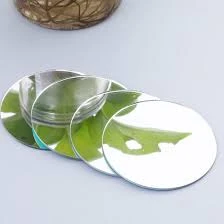

Understanding Grey Low E Glass Benefits and Applications
In the contemporary world of architecture and interior design, the choice of materials significantly influences energy efficiency, aesthetics, and overall functionality. One such material that has garnered attention is grey low E (low emissivity) glass. As the name suggests, grey low E glass is a type of insulated glass that is tinted grey, combined with a low emissivity coating that controls heat transfer and enhances solar performance. This article will delve into the characteristics, benefits, and applications of grey low E glass, underscoring its role in modern building practices.
What is Low E Glass?
Low E glass is a type of coated glass that has a thin metallic layer applied to its surface, which reflects infrared light while allowing visible light to pass through. The main purpose of this proprietary coating is to minimize heat transfer, making it an energy-efficient choice for both residential and commercial buildings. The grey tint not only adds a sleek and modern aesthetic but also provides additional solar control by absorbing some of the incoming solar radiation.
Benefits of Grey Low E Glass
1. Energy Efficiency One of the primary benefits of grey low E glass is its enhanced energy efficiency. By reflecting heat back into the building during winter months and reducing solar heat gain in summer, it helps maintain a stable indoor temperature. This property leads to reduced reliance on heating and cooling systems, thus lowering energy bills.
2. UV Protection Grey low E glass significantly reduces UV radiation that can cause fading of furniture, carpets, and other interior elements. By blocking up to 99% of harmful UV rays, it helps preserve the integrity and longevity of indoor furnishings, making it a practical choice for homes and commercial spaces.
3. Aesthetic Appeal Beyond its functional advantages, grey low E glass contributes to the visual allure of a building. Its sleek grey hue imparts a modern, sophisticated look that complements various architectural styles. Furthermore, it can enhance privacy without completely obstructing the view, allowing for natural light to filter through while softening glare.

4. Acoustic Performance Grey low E glass not only optimizes thermal performance but also contributes to noise reduction. Its multi-layered structure can help minimize sound transmission from the outside, creating a more peaceful indoor environment—an essential factor for urban dwellings and office buildings situated in noisy areas.
5. Sustainability The use of grey low E glass aligns with sustainable building practices. By improving energy usage and promoting thermal efficiency, architects and builders can contribute to a building's LEED (Leadership in Energy and Environmental Design) certification. Additionally, many low E glass products are made with recycled materials, reducing their environmental impact.
Applications of Grey Low E Glass
1. Residential Properties Homeowners are increasingly opting for grey low E glass for their windows and doors. Its energy-efficient properties help reduce heating and cooling costs, while its aesthetic appeal enhances the overall look of the home.
2. Commercial Buildings In the commercial sector, grey low E glass is commonly used in office towers, storefronts, and shopping centers. The material's ability to regulate temperature and light contributes to a comfortable working environment, which is essential for employee productivity.
3. Skylights and Curtain Walls Many architects choose grey low E glass for skylights and curtain wall systems. Its ability to filter sunlight while maintaining energy efficiency makes it an ideal choice for modern building facades that prioritize natural light.
4. Greenhouses In agricultural applications, grey low E glass can be used in greenhouses to regulate temperature while ensuring sufficient light transmission for plant growth. This characteristic is essential for enhancing productivity in horticultural operations.
In conclusion, grey low E glass represents a fusion of functionality and design. Its energy-saving attributes, UV protection capabilities, and aesthetic appeal make it a popular choice among architects, builders, and homeowners alike. As buildings evolve to meet the demands of sustainability and efficiency, grey low E glass is poised to play a significant role in shaping our architectural landscape. Whether improving residential spaces or enhancing commercial buildings, this innovative glass remains a valuable asset in modern design.